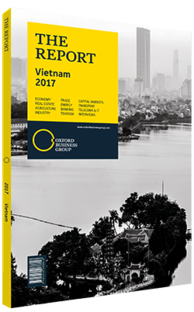Vietnam's transport sector undergoes fleet upgrades and airport facility extensions amid increased passenger numbers
Vietnam’s domestic aviation market has recorded very strong growth in recent years, driven by low-cost carriers (LCCs) that transported 55% of domestic passengers in 2016, according to the Civil Aviation Authority of Vietnam (CAAV). An August 2016 article by VN Express stated that budget airlines have rapidly increased their market share, recording annual growth rates between 15% and 20%.
A New Player
VietJet Air in particular has recorded significant growth after launching in 2011. VietJet’s passenger volumes in 2015 soared by 66% over the previous year to hit 9.3m, and revenues jumped by more than 200% to reach VND10.9trn ($488m) in the same period. Passenger numbers hit 14m in 2016 and revenues more than doubled again to VND27.5trn ($1.2bn). The carrier’s domestic market share also rose from 29.4% in 2014 to 36.2% in 2015 and to roughly 40% throughout 2016.
The carrier launched inaugural services to Taiwan in June 2016 and operated a total of 63 routes, including 37 local and 26 international destinations, as of February 2017. In September 2016 the company also launched its first subsidiary, VietJet Air in Thailand, which offers domestic services between Bangkok, Phuket and Chiang Rai. Perhaps most significant for the company’s growth outlook was an announcement in February 2016 by CEO and founder, Nguyen Thi Phuong Thao, that the airline was planning to launch an initial public offering on the Ho Chi Minh Stock Exchange. The airline carrier debuted on the exchange on February 28, 2017, listing 300m shares at VND90,000 ($4.03) per share.
Fleet Upgrades
Purchasing additional aircraft is a critical component of VietJet’s expansion strategy. The airline signed a $3.04bn deal with US engine manufacturer Pratt & Whitney in February 2016 to have new engines installed in 63 Airbus planes, and announced an $11.3bn deal with Boeing for 100 new aircraft in May 2016. Together with national flagship carrier Vietnam Airlines, the country’s LCCs are planning to expand their fleets to a combined 263 aircraft over the next four years in order to reach an annual capacity of 102m passengers by 2020 – roughly double current levels. This will enable the carriers to meet unprecedented domestic passenger demand, although capacity constraints at major airports remain a serious challenge.
Capacity Constraints
Indeed, the CAAV reported that 36,844 flights were delayed in 2016 between January and November – accounting for over 16% of all flights conducted by Vietnam carriers – largely due to overcrowded facilities.
In an effort to improve service offerings and better enable airport expansion projects, the CAAV announced in November 2016 that it planned to increase departure and landing fees for domestic flights by 15% in 2017. In addition, some aviation security and service fees – which are included in ticket fares – will rise by 42% to VND100,000 ($4.47) per passenger at large international airports, including Cam Ranh, Can Tho, Cat Bi, Da Nang, Noi Bai, Tan Son Nhat and Vinh. Fees at smaller airports in central Vietnam, including Buon Ma Thuot, Chu Lai and Dong Hoi, will rise by 33% to VND80,000 ($3.58).
The proposed increases were made based on the recommendation of the state-owned Airports Corporation of Vietnam (ACV), which said that domestic departure and landing fees were between 32% and 72% of the South-east Asia average and have remained unchanged for five years. Presently, domestic landing and departure fees range between VND1.35m ($60.40) and VND3m ($134.20), which the ACV reported is too low given the industry’s rapid growth and unprecedented passenger volumes. Although these hikes will in turn push consumer fares higher, it will also help the aviation segment expand its infrastructure offerings, therefore enabling sustainable long-term growth in passenger figures.
You have reached the limit of premium articles you can view for free.
Choose from the options below to purchase print or digital editions of our Reports. You can also purchase a website subscription giving you unlimited access to all of our Reports online for 12 months.
If you have already purchased this Report or have a website subscription, please login to continue.

